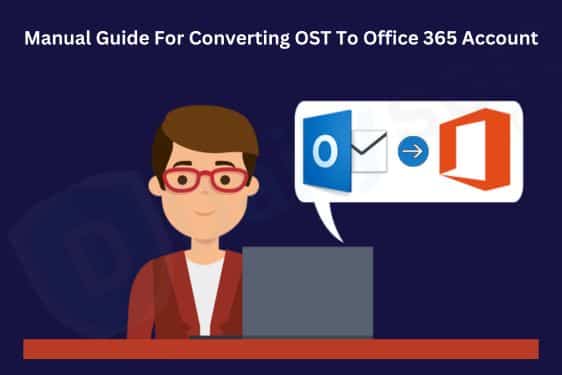Manual Guide For Converting OST To Office 365 Account

Do you dislike using Microsoft Outlook’s offline storage table (.ost) files? Have you thought about moving to Office 365 but are confused about how to move your data from a local file to the cloud (an.ost file)? We will walk you through the process of converting an OST file to Office 365 in this article, allowing you to say goodbye to the restrictions of offline storage and hello to the accessibility and convenience of cloud-based email. Everything you require to know will be covered, including how to export your data and import it into Office 365.
Download now
Why switch from Office 365 to OST?
You might wish to think about converting an offline storage table (.ost) file to Office 365 for a number of reasons. Some benefits and causes that are clear-cut are as follows:
- More convenient access: With Office 365, you can access your emails and other files from any device that has an internet connection. This means that even when you’re on the go, you can stay connected and productive.
- Enhanced security: To protect your data from risks like malware and hackers, Office 365 is supported by enterprise-grade security features.
- Storage expansion: The size of an.ost file is limited by the available local device storage. You won’t have to be concerned about running out of room for your emails and other files because Office 365 gives you access to greater cloud storage.
- Improved collaboration: Office 365 comes with tools like Microsoft Teams that make it simpler to work in real-time collaboration with peers. In one location, you can share files, host online meetings, and communicate with your team.
- Backups have been made easier because Office 365 automatically backs up your data to the cloud, relieving you of the burden of manually archiving yours.ost file. By doing this, you may save time and work and feel at ease knowing that your data is protected.
Overall, switching from an.ost to Office 365 can give you an email experience that is more productive, secure, and team-oriented.
How can I go from OST to Office 365?
You can often export your offline data (.ost files) from MS Outlook in PST format. Then, it is simple to import it into Office 365. Here is a detailed tutorial on doing it with Microsoft Outlook:
- Start by launching Microsoft Outlook, and then select the “File” tab located in the top left corner.
- Choose the “Import/Export” menu option under “Open & Export.”
- Select “Export to a file” from the “Import and Export” pop-up window, then click “Continue.”
- Select “Outlook Data File (.pst)” as the file type, and then click “Next.”
- To export certain folders, select them and then select “Next.”
- To save the exported.pst file, select a location and then click “Finish.”
- Afterward, proceed to the “Import or export a PST file” window by logging into your Office 365 account.
- Choosing “Import” and then selecting “Next.”
- Select “Import from a PST file” next, then click “Next.”
- Select the.pst file that you exported from Outlook, then click “Next.”
- Select the folder where you want your imported data to go, then click “Next.”
- Once you’ve reviewed the import summary, click “Finish” to finish the import.
Remember that the length of time this procedure takes will depend on your internet connection speed and the size of your.ost file. Additionally, it’s a good idea to backup your.ost file before exporting it in case something goes wrong.
Frequently Asked Questions
Q1: Why would I want to convert an OST file to Office 365?
A copy of your mailbox is kept on your computer as an OST file (offline storage table). When you utilize Outlook’s “Work Offline” feature or when you set up your Outlook account in offline mode, it is created. If you want to use Office 365’s sophisticated features and collaboration tools, access your email, contacts, and other data from many devices, or both, you might wish to convert your OST file.
Q2: I don’t have an Outlook account; can I still convert an OST file to Office 365?
Yes, however, you’ll need a third-party solution to convert an OST file to Office 365 without having an Outlook account. OST to PST Converter, OST Extractor Pro, and OST to Office 365 Converter are just a few of the apps that can convert OST files to Office 365.
Q3: Is there a third-party tool that can convert OST to Office 365?
Yes, a lot of well-known brands are selling this kind of tool. Any of them are open for testing, but we typically advise using the DailySoft OST to Office 365 Migrator. It’s one of the greatest options, especially for non-technical people. It offers frequent updates along with all of its complex features.
Q4) Is it possible to transfer a damaged OST file to Office 365?
Yes, you can convert a damaged OST file to Office 365, in response. You will require third-party OST repair tools for that. In essence, they may convert corrupted OST files without any issues because they are made to manage such situations.
Conclusion
Your email experience can be greatly enhanced by moving your an.ost file to Office 365. It not only offers improved storage, accessibility, and security, but it also makes it simpler to interact with coworkers and perform backups. You may quickly convert your OST file to Office 365 with the aid of Microsoft Outlook and a third-party program. Finally, you can start enjoying all the advantages it has to offer.
